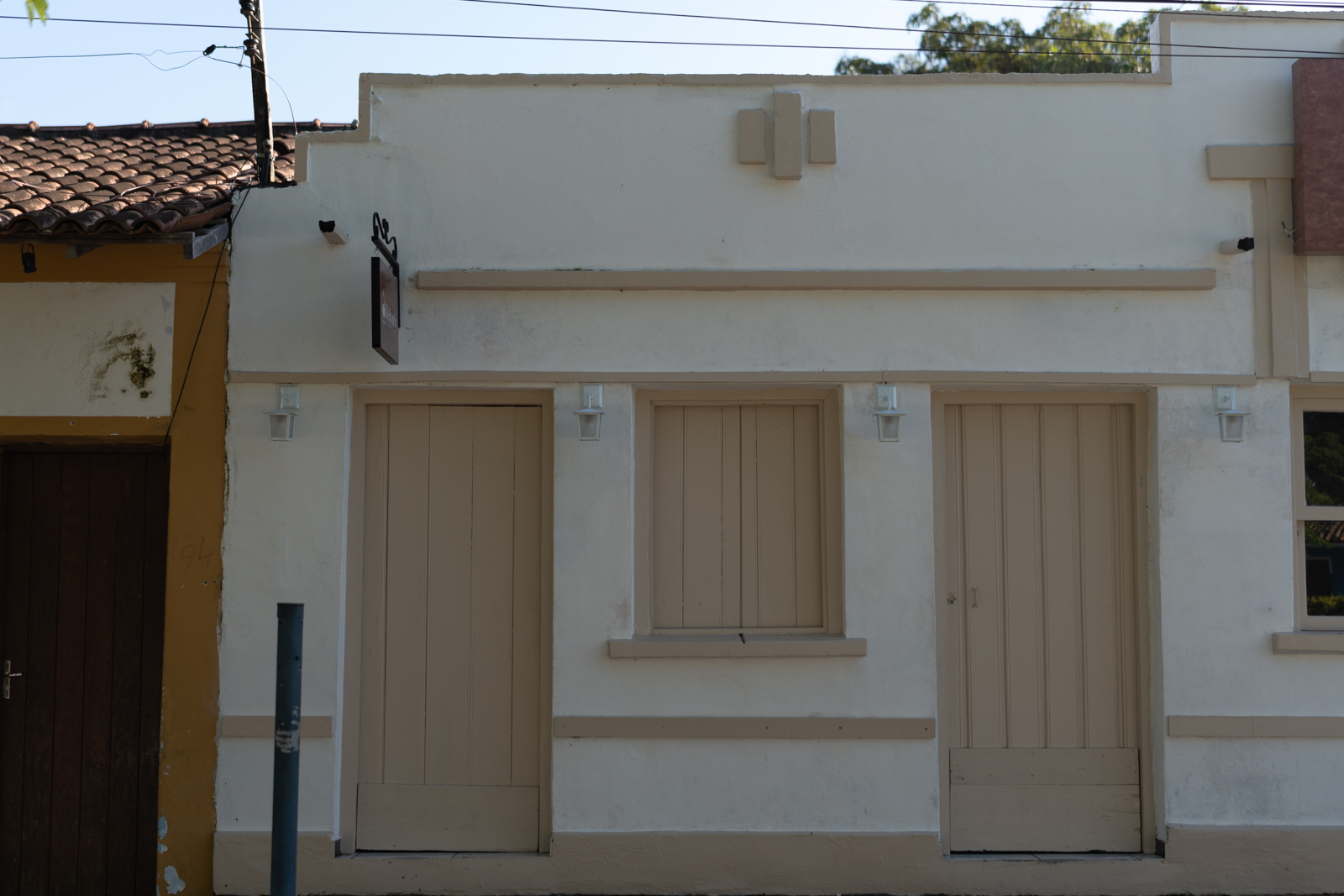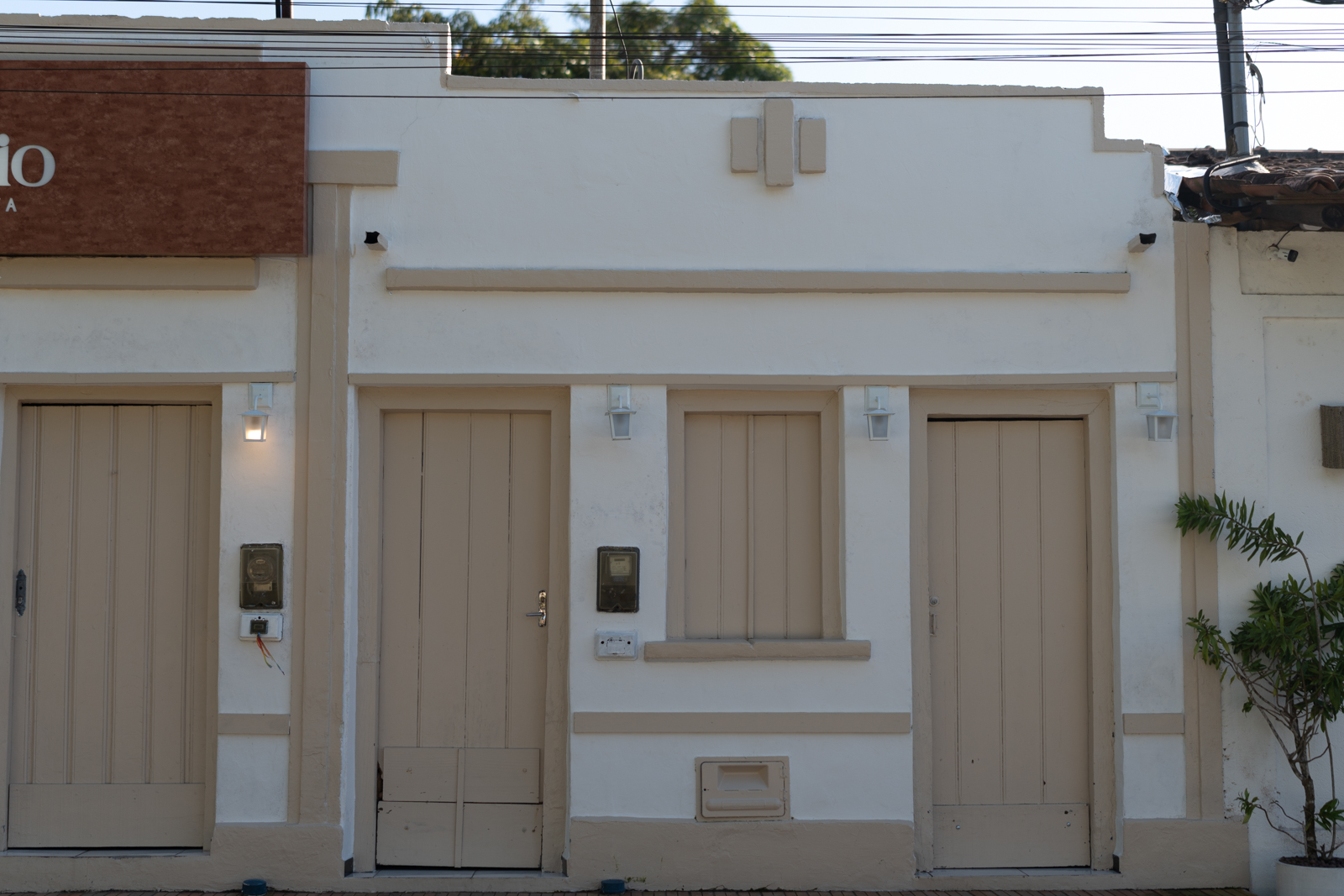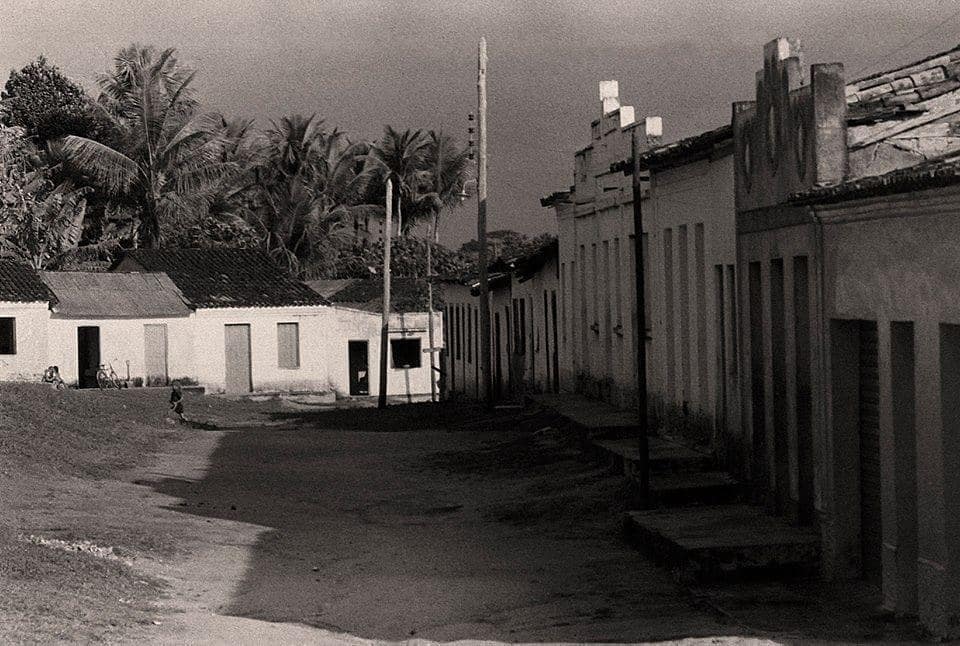Platibanda
The houses on Praça Brigadeiro Eduardo Gomes, also known as
Praça da Igreja, today follow the pattern of colonial architecture dominant in Brazil in the
16th to 19th century.
Despite the formation of the village of Arraial de Nossa Senhora d’Ajuda dating from the 19th century,
final period of this architectural style, the influence of what happened in the rest of the
Brazilian cities is noticeable in real estate and is maintained until today.
Initially, the houses, built on a joint effort, were made of wattle and daub, or "sopapo",
as the older residents prefer.
The whole village got together and in a day's work the house was erected, with mud walls and
wood and thatched roof.
Over time the houses were adapted to the Portuguese colonial style.
The paint for painting the walls was obtained from the clay of the cliffs:
pink, orange, white and yellow were the tones found.
There was an aesthetic and constructive standard. The houses were placed side by side,
without setbacks on the sides and at the edge of the streets, which did not have sidewalks or sidewalks.
The idea was to reproduce a Portuguese look to Brazilian villages.
The narrow and elongated floor plan of the dwellings allowed openings for lighting
natural only in the rooms adjacent to the street and in those located at the back, including
were located the alcoves and a corridor, central or lateral, for the circulation between the
environments.
An interesting detail of the village of Nossa Senhora d’Ajuda is that there were no houses,
which were the two-story houses, which demonstrates the simplicity of the local population.
Nearby villages such as Porto Seguro and Belmonte have two-story colonial houses,
where the aristocracy of the time resided.
Another important factor is that some of the houses in the square, like this one, have a Platibanda.
Platibanda is this vertical detail that frames the upper part of the property seeking
hide the roof. Its function initially was just to prevent water from the roof
fell on whoever passed in front. Over time it became an architectural adornment.
adopted throughout Brazil becoming a symbol of modernity and erudition.
The Platbanda became popular at the beginning of the 20th century in cities in the interior of the
Brazilian Northeast.
Find out about the Square's schedule of events

 Port
Port Esp
Esp Eng
Eng


